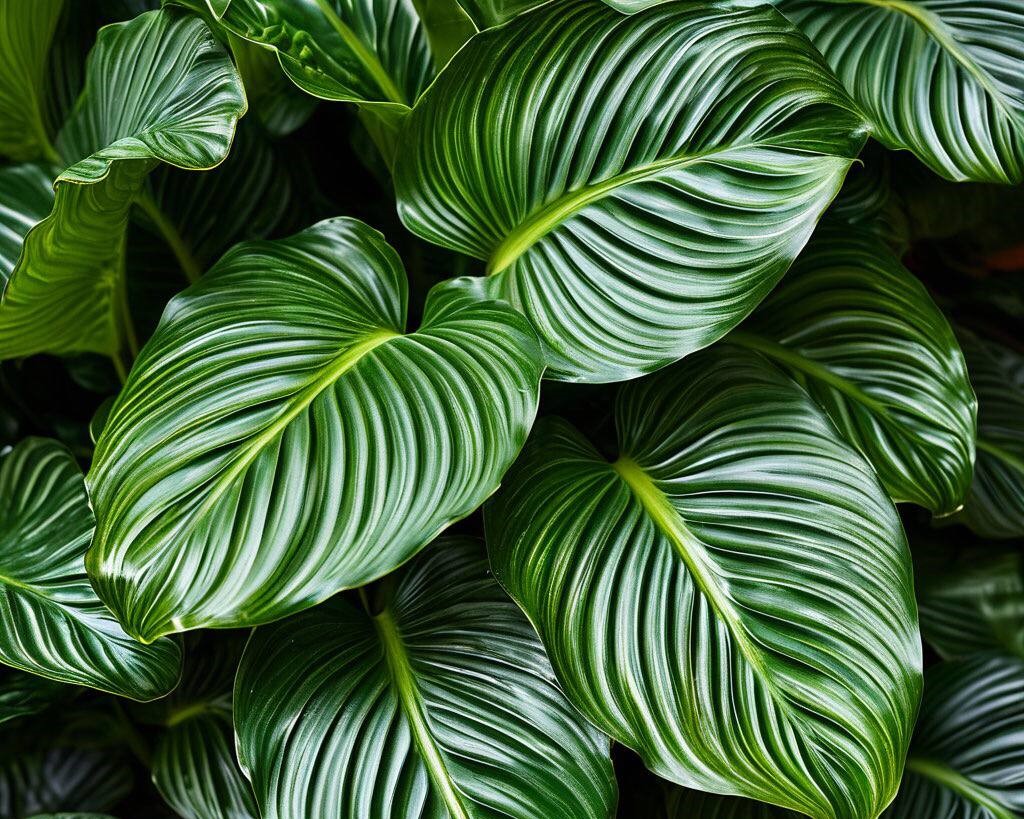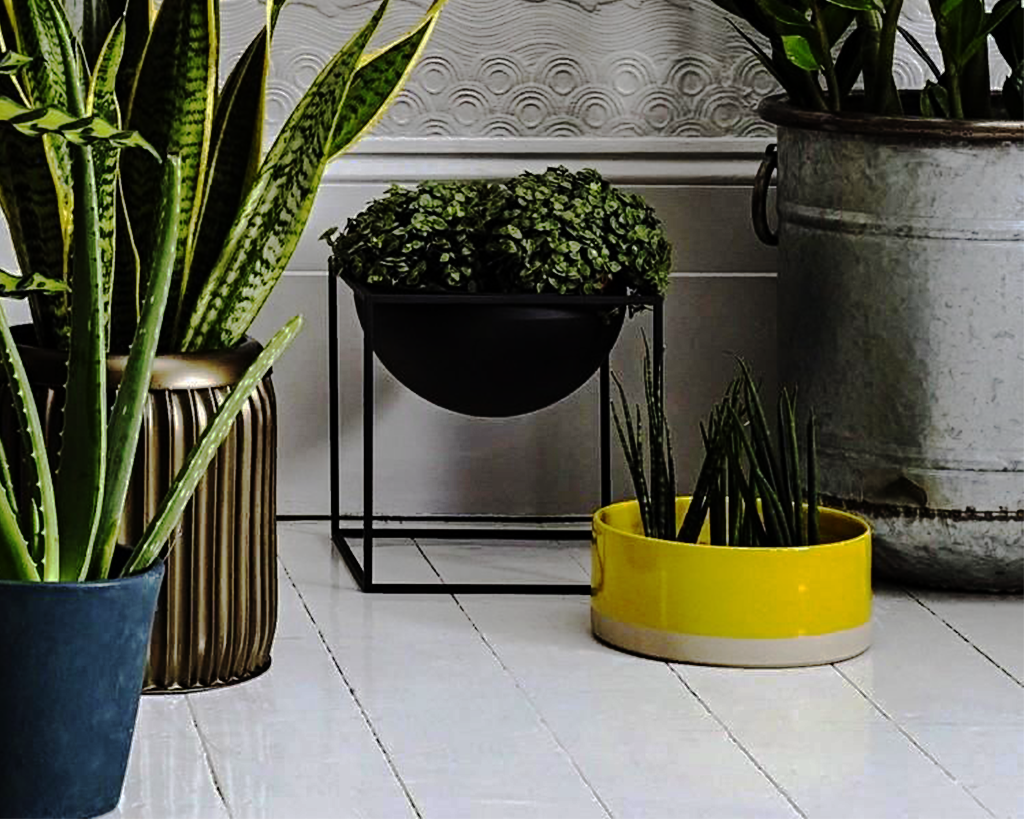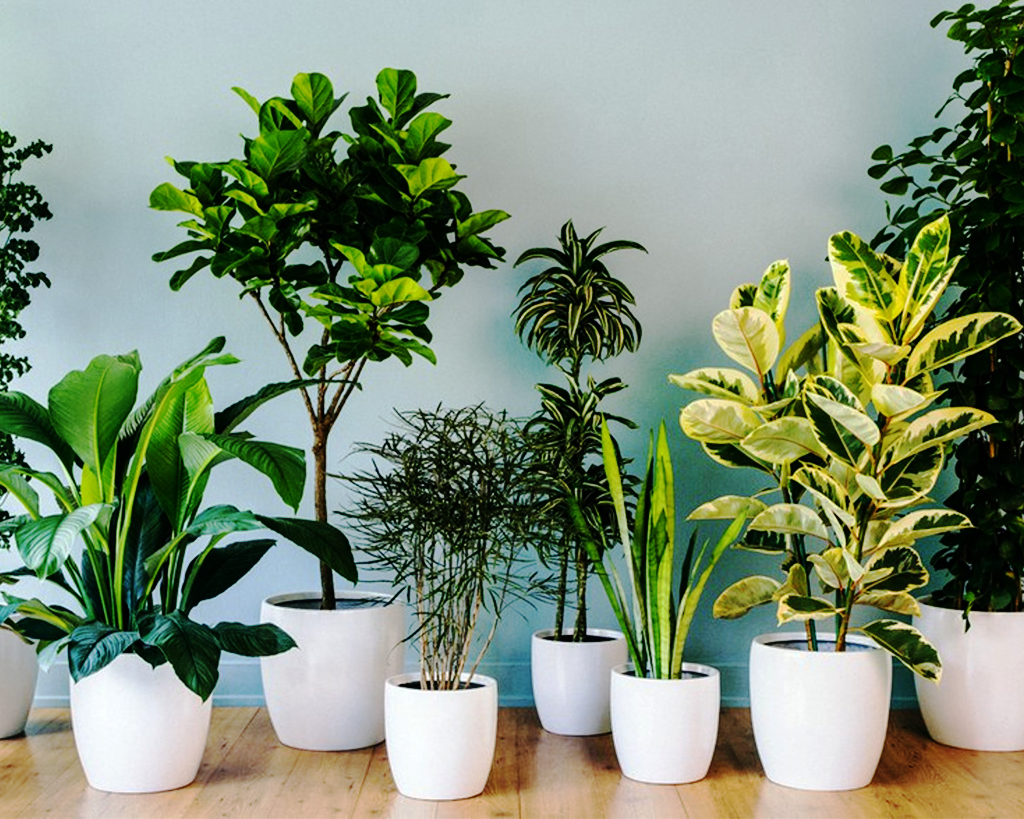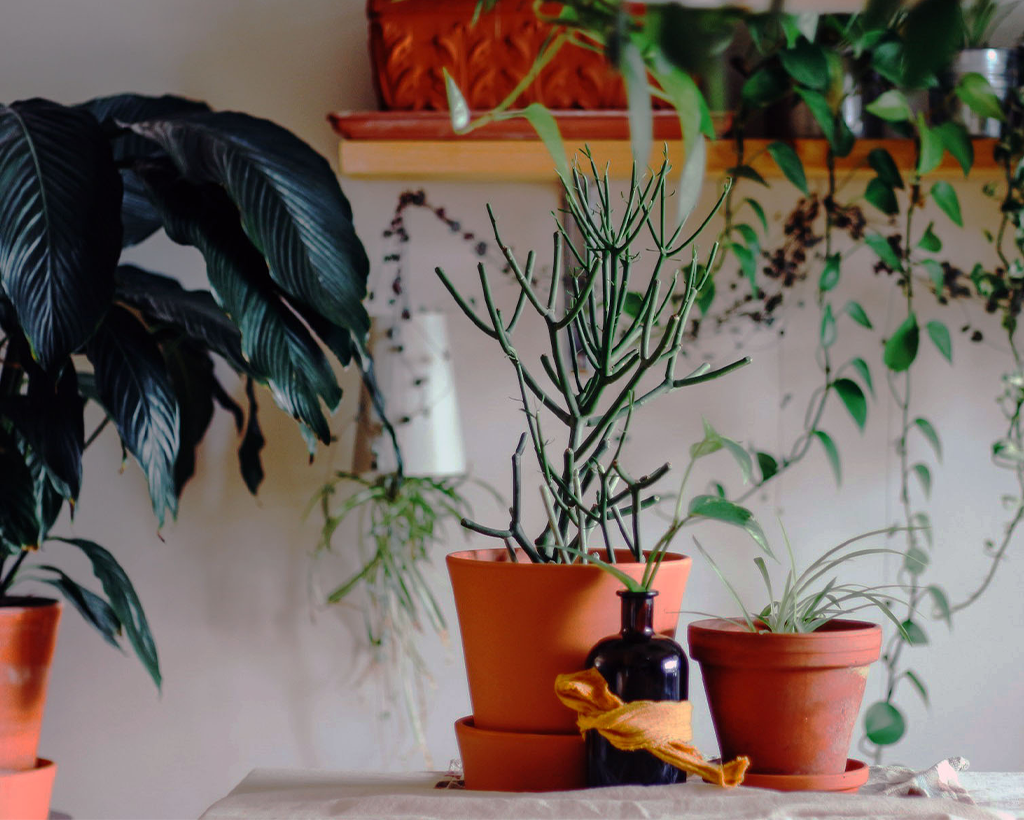Kalatea care is an important element to ensure that this tropical beauty pleases you in your home. If you want to bring coziness and a touch of exotic charm to your interior, this plant is an ideal choice. Known for its stunning foliage and unique “character”, it requires a little more attention than most houseplants. Ready to learn how proper kalatea care will help it stay healthy? At the end of this article, you’ll find a link to a printable memo.
Kalatea
Calathea is a true tropical aristocrat native to the humid forests of South America. Imagine: dense jungle, humid air, diffused sun rays breaking through the canopy of trees – that’s where she feels at home. In nature, Kalatea is used to comfortable shade, soft light and high humidity, so in an apartment she also needs to create a cozy atmosphere.
The main treasure of kalatea is its leaves. These are not just green plates, but real works of art. It seems as if nature itself has painted them by hand: stripes, spots, patterns – in different species they can resemble peacock feathers, zebra stripes, or even complex artist’s strokes. And all this – in incredible combinations of colors: from rich green to deep burgundy, with silver or golden flecks.
But what makes kalatea truly unique is its ability to “move”. Yes, yes, you heard right! The leaves of this plant live their own life: in the morning they open, as if welcoming a new day, and in the evening they rise up, as if they are folded in prayer. That is why kalatea is also called a “prayer plant”. Scientists explain this phenomenon as follows: at the base of the leaf there are special cells that respond to light and humidity, adjusting the position of the leaf. However, for indoor plant lovers, it looks almost magical!
Kalatea is not just a beautiful plant, it brings a piece of tropical forest to the house, creating an atmosphere of comfort and harmony. Yes, she is a little moody, but for her luxurious appearance and amazing “dancing” is worth a little fight. If you provide it with the right conditions – enough humidity, soft diffused light and regular watering-it will thank you for its beauty and unique liveliness.

Kalatea care: why is calathea considered moody?
Why is calathea considered moody? To be honest, kalatea is not a plant for those who just want to put a pot on the windowsill and forget about it. It requires care and attention. If you are not ready to comply with its “rules”, it will quickly begin to act up-shed its leaves, dry out and lose its beauty. Let’s find out what exactly it requires.
Humidity is everything!
Calathea literally loves the humid air. Its ideal humidity level is 60-80%, and if the house is dry, it will quickly begin to suffer. To avoid problems, you will either have to spray its leaves regularly, or put a humidifier next to it. You can also use a pallet with wet expanded clay – this will create the effect of a light fog around the plant.
Lighting – without fanaticism
Calathea loves light, but she hates direct sunlight. If you put it under the scorching sun, burns will appear on the leaves. It is better to choose a place with diffused light – for example, next to a window, but behind a light curtain. The east and north windows are just perfect.
Watering-carefully!
Kalatea is a real foodie when it comes to water. It does not tolerate hard water with chlorine and lime, so it is better to water it with filtered or at least settled water at room temperature. Watering should be moderate: the soil should always be slightly moist, but without stagnation of water-otherwise the roots will start to rot.
Temperature – no sudden jumps
Kalatea is a big fan of stability. It feels comfortable at temperatures between 18 and 25°C, but sudden temperature jumps are its enemy. Cold windowsills, drafts, and sudden swings can cause stress and lead to leaf problems. If it is cool in winter, it is better to remove the plant away from the window.
Love and patience
Calathea is a plant that requires attention and care, but if you give it everything it needs, it will thank you with incredible beauty. A little patience, proper care – and it will delight you for many years to come.
Soil for kalatea
When choosing a soil for kalatea, it is important to remember that it should be light, loose and retain moisture well, but not retain excess water. In nature, kalatea grows in tropical forests, where the soil is rich in organic matter, well drained and always slightly moist. Therefore, the ideal option is a ready-made primer for aroid or tropical plants, but you can also make a mixture yourself.
Optimal soil composition for kalatea:
- 40% leafy earth-provides nutritional value;
- 20% peat – retains moisture;
- 20% perlite or vermiculite-for drainage;
- 10% coconut substrate-makes the soil airy;
- 10% charcoal-prevents root rot.
The main rule is that the soil should be light and not turn into a swamp after watering. If the soil is too dense, the roots of calathea will suffer from a lack of oxygen, which will lead to rotting. Therefore, always make sure that there are drainage holes in the pot, and always put expanded clay or pieces of coal on the bottom for better water outflow.
Kalatea transfer
A kalatea transplant is an important moment in the life of any Kalatea. Although she does not like unnecessary stress, but from time to time she needs to change her “house”. Usually, the transplant is carried out every 1-2 years, and if the plant is young and actively growing, you can do it more often. The main thing is to do everything carefully and correctly, so as not to disturb its tender roots.
First, choose a pot. It should be slightly larger than the previous one, but not too spacious, otherwise kalatea will direct all its forces to root growth, and not to lush foliage. And, of course, always with drainage holes – without them, the roots can rot.
Secondly, we prepare the right soil. Kalatea likes light, airy soil that retains moisture well, but does not turn into a swamp. It is best to use a mixture of leafy earth, peat, perlite and coconut substrate – this combination creates ideal conditions for growth.
Now the transfer itself
First, carefully remove the kalatea from the old pot. It is important not to pull on the leaves and not to disturb the roots too much – they are quite sensitive. If there are rotten areas on the roots, they should be carefully removed.
Then we put the plant in a new pot, sprinkle it with fresh soil, slightly compact it and water it with warm standing water. After the transplant, it is better to put kalatea in a warm, slightly shaded place and do not disturb it for a few days – let it get used to the new home.
And finally, it is better to transplant kalatea in spring or early summer, when it is most actively growing. In autumn and winter, the plant goes through a dormant period, so it’s best not to disturb it unnecessarily.

Popular types of kalatey
Calatheas are very different, and each of them is a small masterpiece of nature. Let’s get acquainted with the most spectacular representatives of this amazing family.
Kalatea orbifolia is a true star among the Kalatea. Its huge rounded leaves with delicate silver stripes look as if they were painted with watercolors. This type is loved for its spectacular appearance and ability to create a sense of freshness and lightness in any interior.
Kalatea makoiana – if you have ever seen peacock feathers, you will easily recognize it among other species. Its leaves are covered with a fascinating pattern, which seems to have been drawn by a skilled artist. It looks especially beautiful in large pots, where you can fully see its whimsical pattern.
Kalatea rufibarba is something very special! Unlike most of its relatives, it has velvety to the touch leaves that are pleasant to iron. They are dark green on top, and with an expressive burgundy hue on the bottom, creating an incredible contrast. This view is especially popular for those who like not only to look at plants, but also to feel their texture.
Calathea lansifolia (Insignis) – long narrow leaves with a wavy edge and a pattern in the form of dark spots make it look like a picturesque work of nature. It looks very decorative and gives the space a touch of exoticism. It looks especially impressive in hanging pots or tall pots.
Kalatea care after purchase
Congratulations! Now you have a kalatea-an exquisite and capricious decoration of your home. But before it becomes a full-fledged part of your green corner, it is important to help it adapt to new conditions.
The first thing to do is not to rush to transfer. Yes, you want to immediately pick up a beautiful pot, but give the plant a couple of weeks to acclimatize. Store-bought calathea is often grown in greenhouses, where the humidity and temperature are ideal, and a sudden change in the environment can become stressful.
Then select the correct location. Calathea can’t stand direct sunlight, so put it in partial shade – for example, on the east or north window. It needs soft, diffused lighting without overheating.
Now about humidity, if the air in the room is dry (especially in winter, when the heating is running), provide additional humidification. You can put a tray of wet pebbles next to the plant, use an air humidifier, or regularly spray the leaves with warm standing water.
As for watering – do not overdo it, but also do not over-dry the soil. Use soft water without chlorine (preferably filtered or settled). Water when the top layer of earth is slightly dry, but do not allow it to dry out completely.
Don’t forget to check for pests! Sometimes store-bought plants can come home with uninvited guests – spider mites or thrips. Inspect the leaves on both sides and, if you notice anything suspicious, treat the plant with a special agent.
After two or three weeks of adaptation, you can think about transplanting to a more suitable ground. Kalatea likes light, loose soil with good breathability – a mixture of peat, perlite and leafy earth will work perfectly.
If everything is done correctly, your kalatea will quickly get used to the new home and start delighting you with its amazing leaves and characteristic “dances” throughout the day!
Calathea Sanderiana Ornata: refinement in every detail
Calatea Sanderiana Ornata is a true aristocrat among the Calataeans. Its elongated shape, large oval leaves and incredible patterns make it special. Imagine dark green leaves with a spectacular sheen, and now add to them elegant white and pink stripes along the veins – this plant literally looks like a work of art.
The height of this beauty can reach 150 cm, so it will be a great decoration for spacious rooms. The underside of the leaves has a deep dark purple hue, which creates a beautiful contrast when the leaves move.
The main feature of Sanderian is its fish bone-like pattern. This design makes it not just a houseplant, but a real star of any interior. Kalatea Ornata perfectly fits into modern and classic styles of space design, giving the room a touch of sophistication and natural elegance.
Growing conditions and care
If you decide to get a calathea of Sanderian Ornata, be prepared to create ideal conditions for it. This plant does not tolerate neglect and requires care.
Lighting – choose wisely! Calathea likes bright but diffused light. Direct sunlight is contraindicated – it can cause burns. The ideal location is east or north windows, where there is enough light, but it is not aggressive.
Humidity is mandatory! Kalatea is a true tropical resident, which means that it needs from 70 to 90% humidity. In dry air, it will start to get cranky: the leaves may curl and lose their decorative effect. A humidifier, regular spraying, or a tray of wet pebbles are your staunch allies.
The soil is light and nutritious. It is best to use a loose, moisture-intensive substrate. A ready-made soil mixture for marant or azaleas is suitable. The main thing is good drainage, so that the roots do not rot.

Temperature – no sudden changes. In summer, it is comfortable at 22-30°C, in winter-not lower than 18°C. Drafts and cold are the main enemies of kalatea!
Watering is moderate, but regular. The soil should not dry out, but also stagnate moisture should not. Use soft, filtered or stagnant water. The top layer has dried up – it’s time to water!
Top dressing – in moderation. During the growth period (spring-summer), feed kalatea once every 2 weeks with a weak fertilizer solution for decorative deciduous plants. The main thing is not to overdo it!
Transplant – once every 1-2 years. Young plants are transplanted annually, adults-once every 2-3 years. Take a pot slightly larger than the previous one – the roots like space, but not too large.
Reproduction – by dividing the bush. The most reliable method is to carefully divide the rhizome when transplanting. The main thing is not to damage the tender roots!
Kalatea Sanderiana Ornata does not forgive mistakes in care. If you ignore her needs, she will start to get sick and lose her decorativeness. Keep an eye on her condition and take timely action!
Calathea pests
Pests – who threatens your kalatea? It may encounter scabies, mealybugs, or spider mites. Regularly inspect the leaves, especially the underside, and at the first sign of damage, treat the plant with special tools.
Should I start a kalatea?
If you are ready for care and attention, kalatea will become the jewel of your plant collection. It will decorate the interior and give a cozy atmosphere. The main thing – do not forget about her preferences, and then your green beauty will delight you for many years to come.
What do you think of Calathea? Do you already have experience caring for her or are you just planning to start one? Share your impressions! And now you can download the memo for this article.




